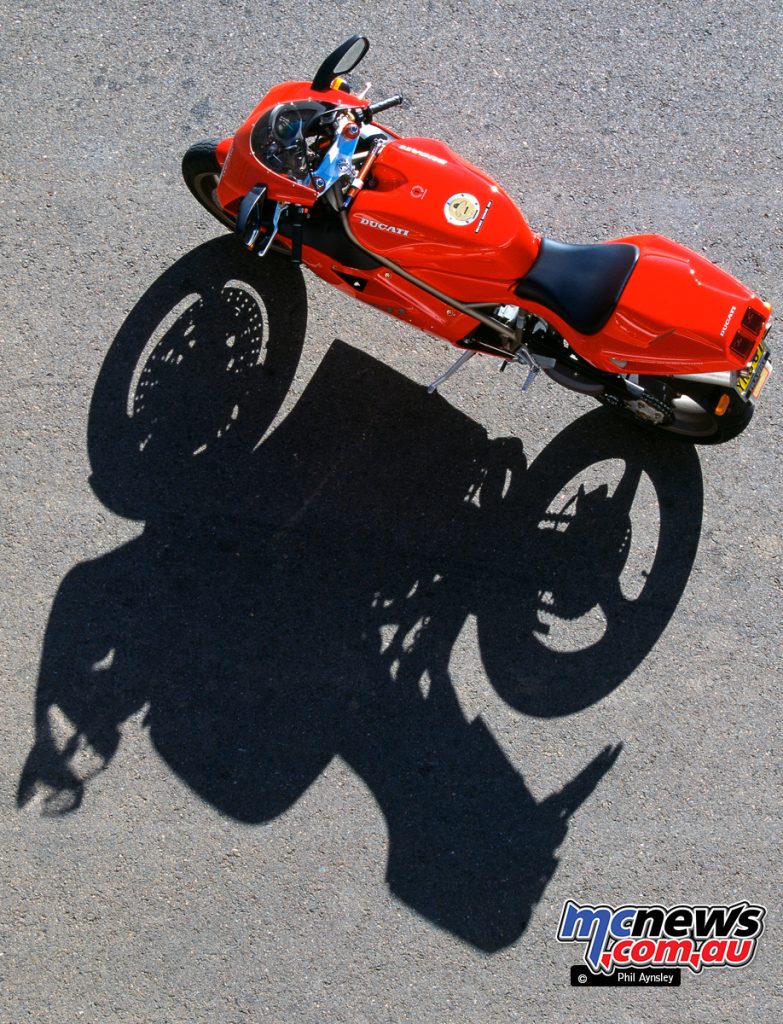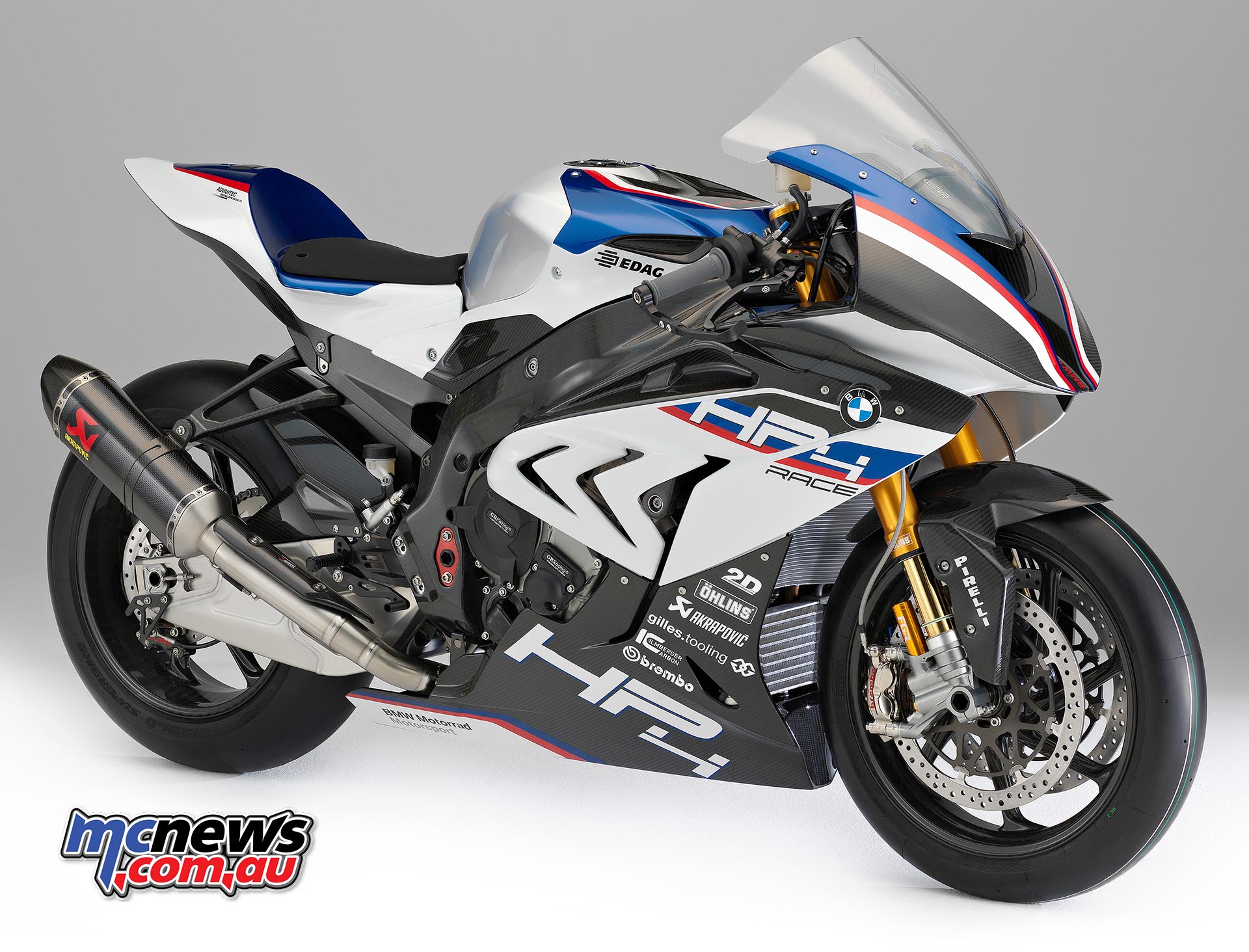Ducati 916
With Ian Falloon
Only a few motorcycles can be credited with defining an era. Honda’s first 750 Four of 1969 established a tradition of across-the-frame four-cylinder motorcycles that continues today, and in 1994 Ducati unleashed their 916. The Ducati 916 was not only a benchmark motorcycle for Ducati, it created a styling blueprint for sportsbikes that also continues today.
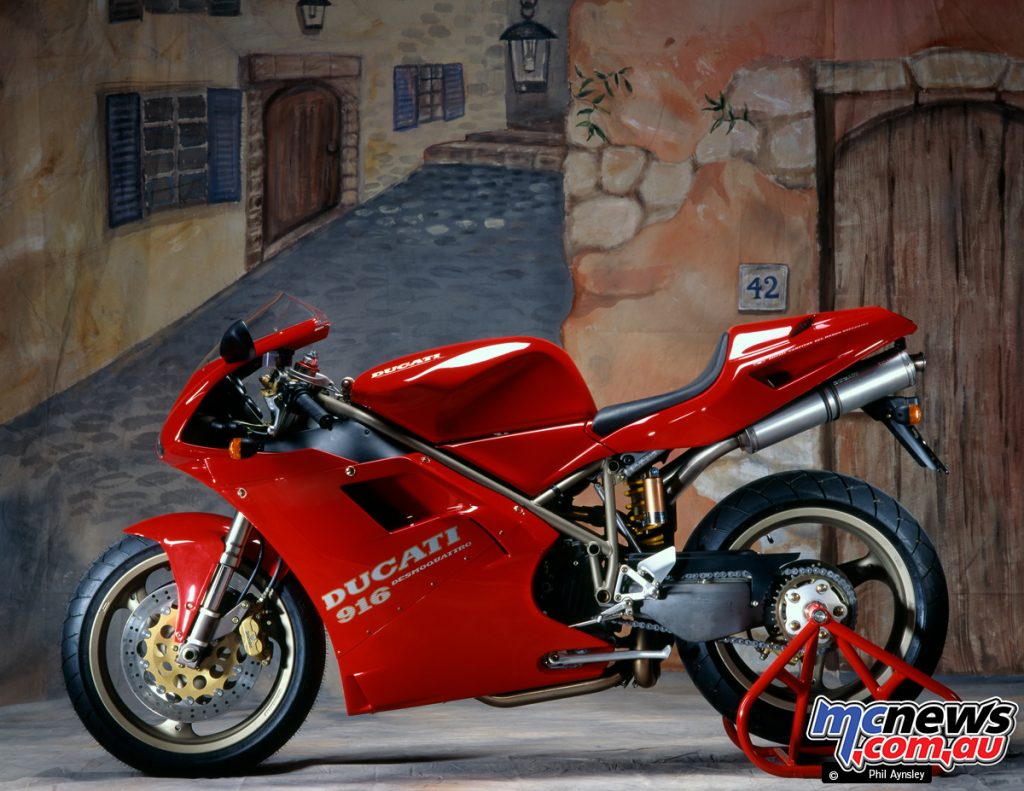
I was fortunate enough to be given a private viewing of the 916 prototype by Massimo Bordi at the factory in 1993 and it remains an indelible memory. “No pictures please,” Bordi said but later one of the employees let us in a back door to take some illegal photos. I had never seen anything like the 916 and the features that set it apart in 1993 were so advanced it took the opposition years to catch up.
Although the 916 looked revolutionary, with its strong frontal aspect of twin poly-ellipsoidal headlights, single-sided swingarm, and exhaust system exiting under the seat, it still represented Ducati’s traditional philosophy of evolution. At the heart of the 916 was the Desmoquattro 90-degree V-twin, born in 1987 as a 748 before growing to 851 and 888c.
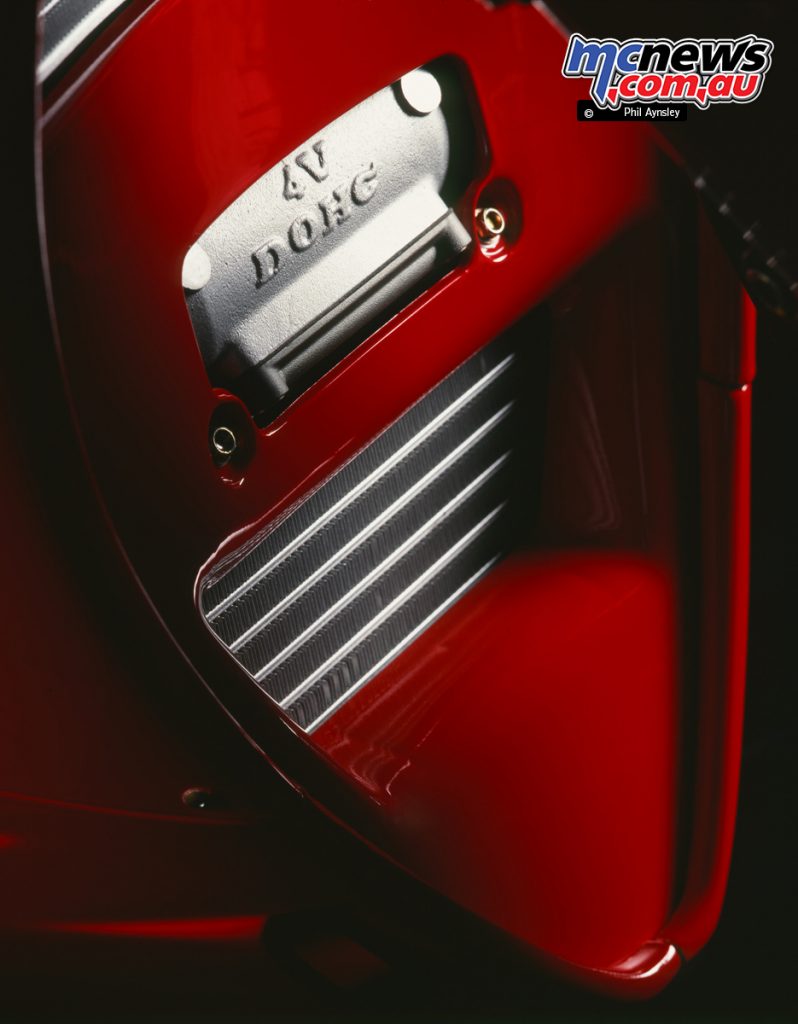
The 851 and 888 were great Superbike racers but flawed production bikes. When Massimo Tamburini set about designing the 916 at the Cagiva Research Centre in San Marino he was determined his baby would be faultless.
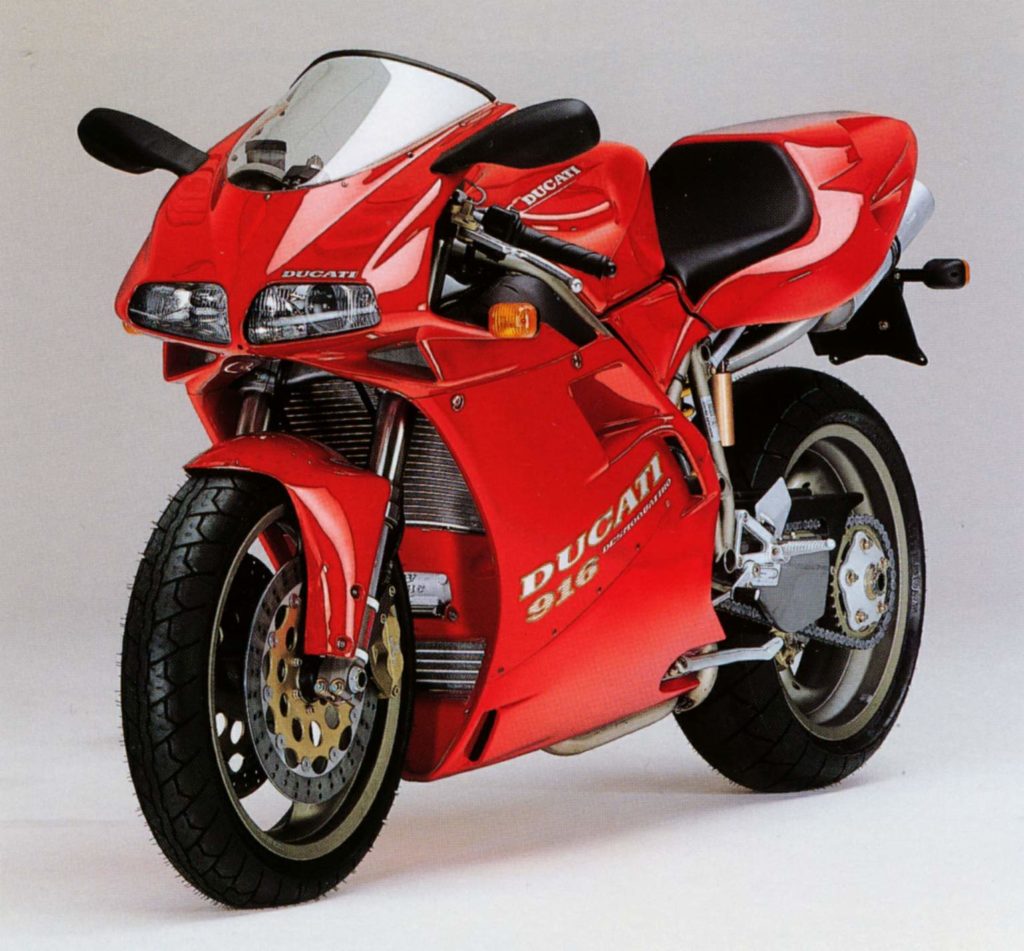
So, while the 916 engine was essentially a stroked 888, with the same liquid-cooled double overhead camshaft cylinder heads and Marelli electronic fuel injection, the rest of the motorcycle was new. While serious consideration was given to the twin-spar Deltabox aluminium frame then becoming popular, tradition won and Tamburini eventually eschewed this in preference to the traditional Ducati space frame.
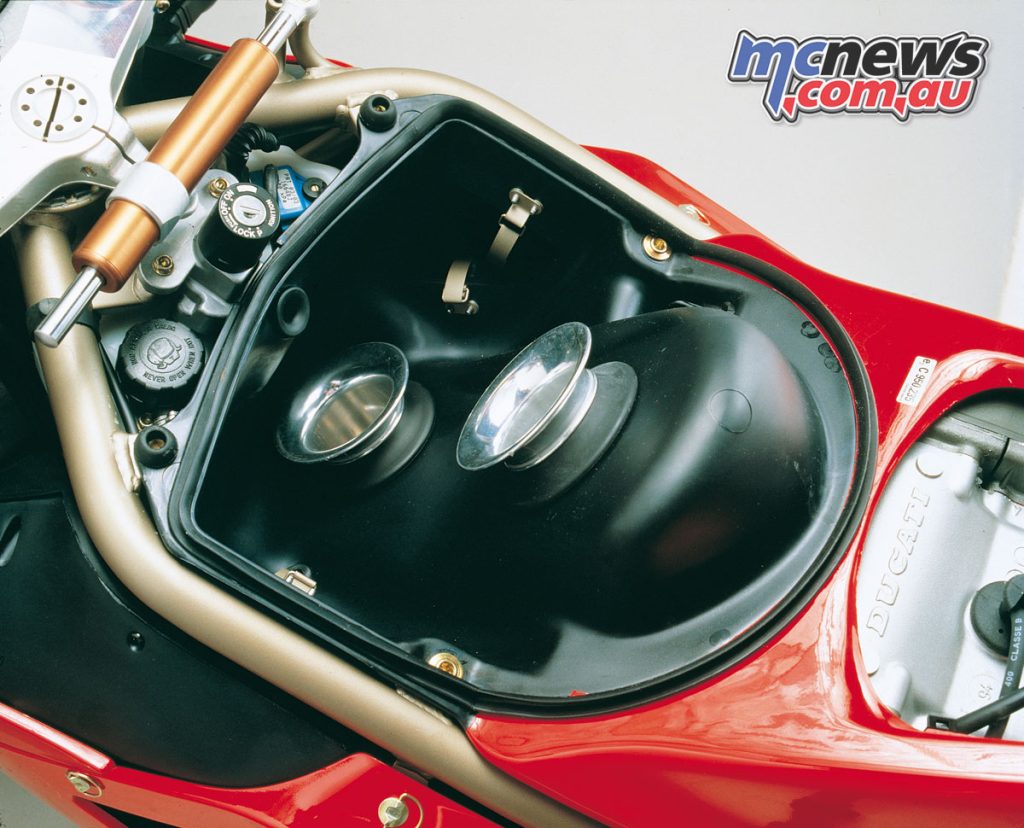
From Ducati’s racing experience with the 851 and 888, the requirements for the 916 included a reduction in the wheelbase from the 888, yet provide as close to 50/50 weight distribution as possible, along with adequate wheel travel. This meant placing the front wheel as close to the engine as possible and the engine was rotated forward 1.5° to help the front tyre clear the cylinder head.
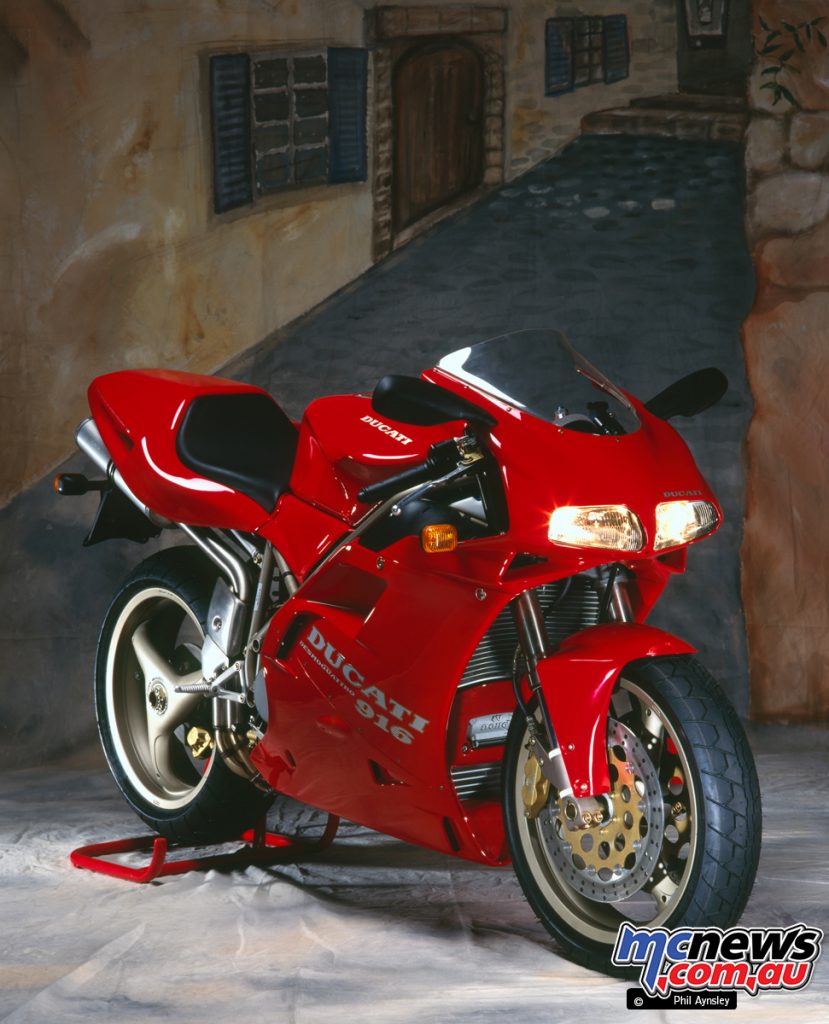
Tamburini was also intent on creating an extremely strong steering head structure, with an 80mm in outer diameter, with special bearings to allow for a thick (35 mm) steering tube. An important element in the design was the incorporation of adjustable caster without altering the wheelbase.
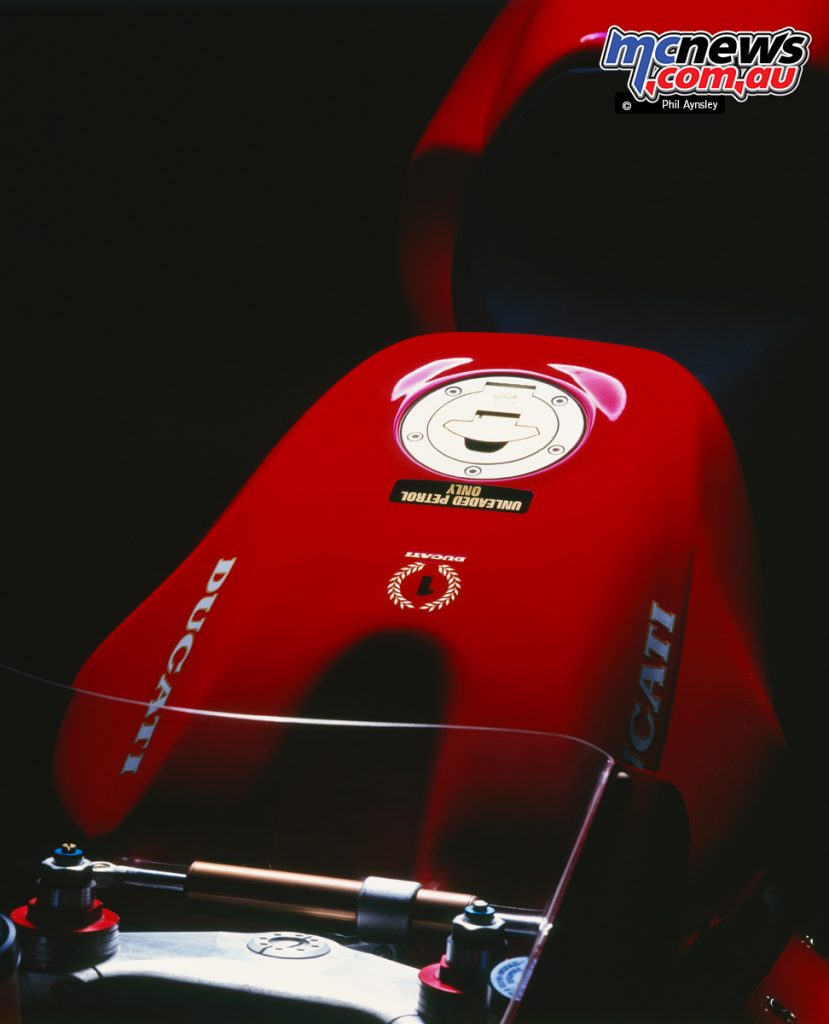
Another important consideration in the design was a reduction in frontal area and an improvement in aerodynamics over the 851/888. This led to the small overall size of the motorcycle, and the shape of the fairing, fuel tank, and seat. From above the shape was intentionally designed to emulate the curves of a woman.
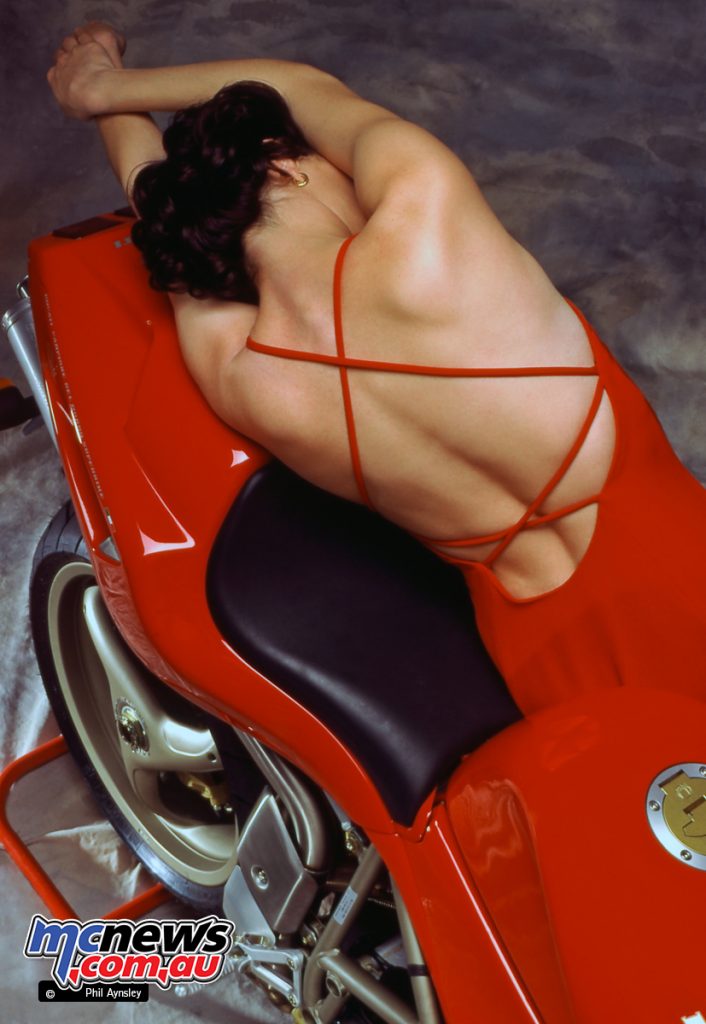
Part of the Tamburini philosophy was to feature individually designed components for every part of the motorcycle, even the fasteners were not shared with the earlier 888. The front 43 mm Showa triple clamps were machined in pairs, the chill-cast lower triple clamp notable for its exceptional depth.
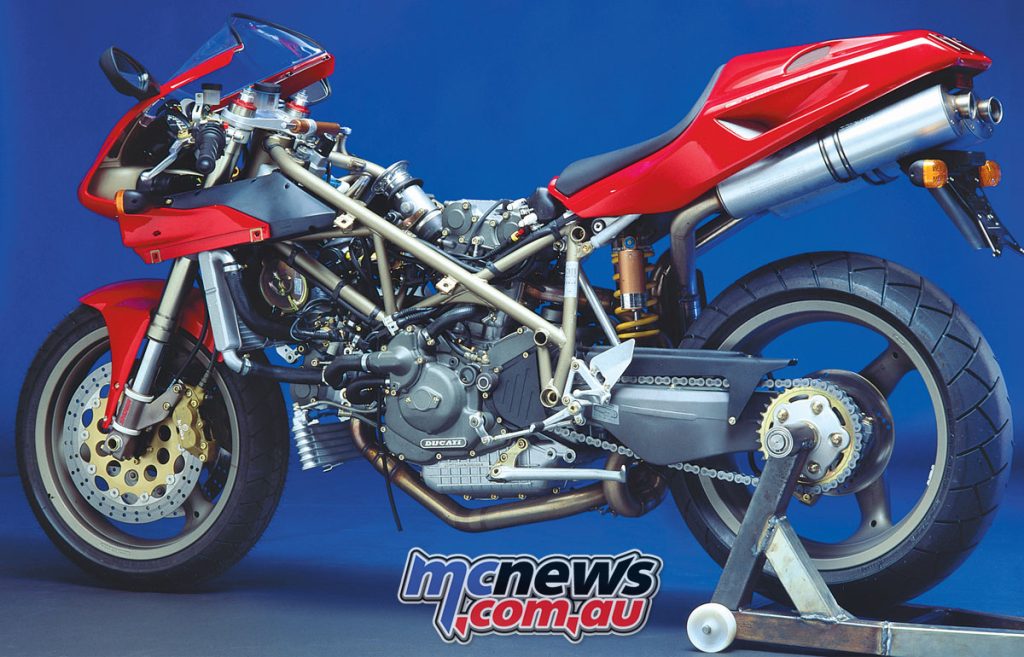
In the early 1990s Ducati still dreamed of winning the both the Suzuka Eight-hour race and the Bol d’Or, so the 916 was designed with a single-sided swingarm to allow for rapid wheel changes.
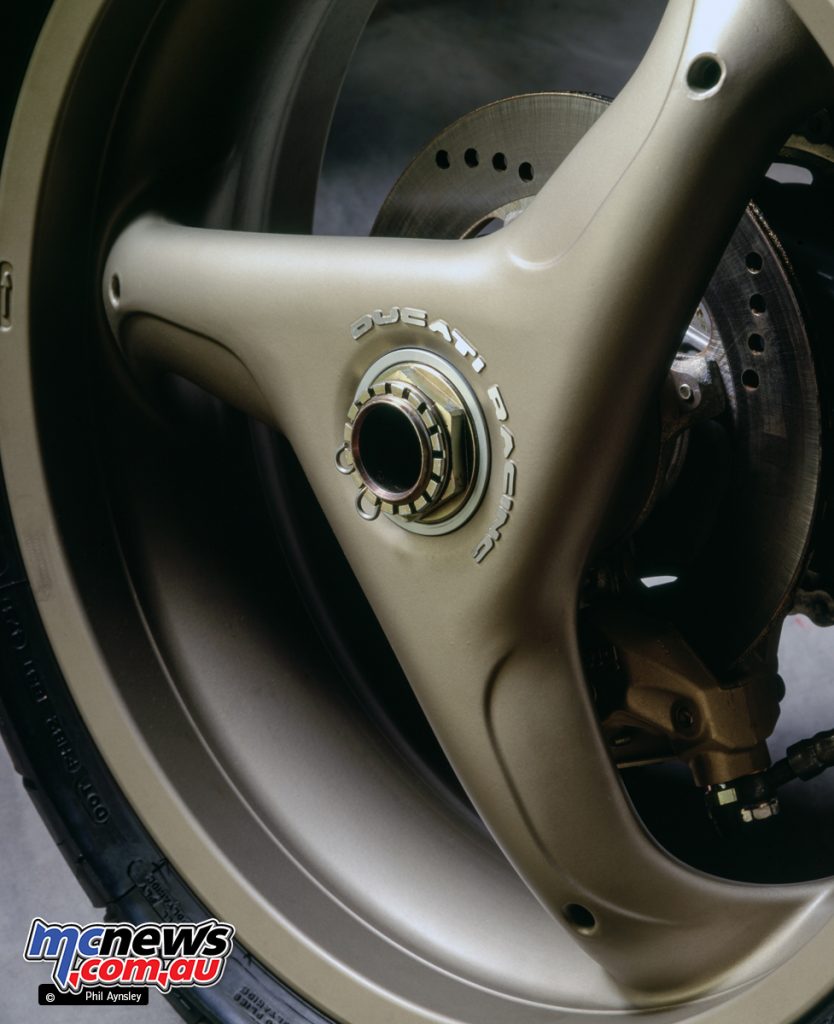
The 916 produced 114 horsepower at 9,000 rpm but sheer power wasn’t what the 916 was about. Although capable of 260 km/h, there were faster and more powerful motorcycles available. The 916 offered more than engine performance, and provided a balance between the engine and chassis that set new standards. Unlike many earlier Ducatis there was a homogeneity about the design that took the 916 into another dimension.
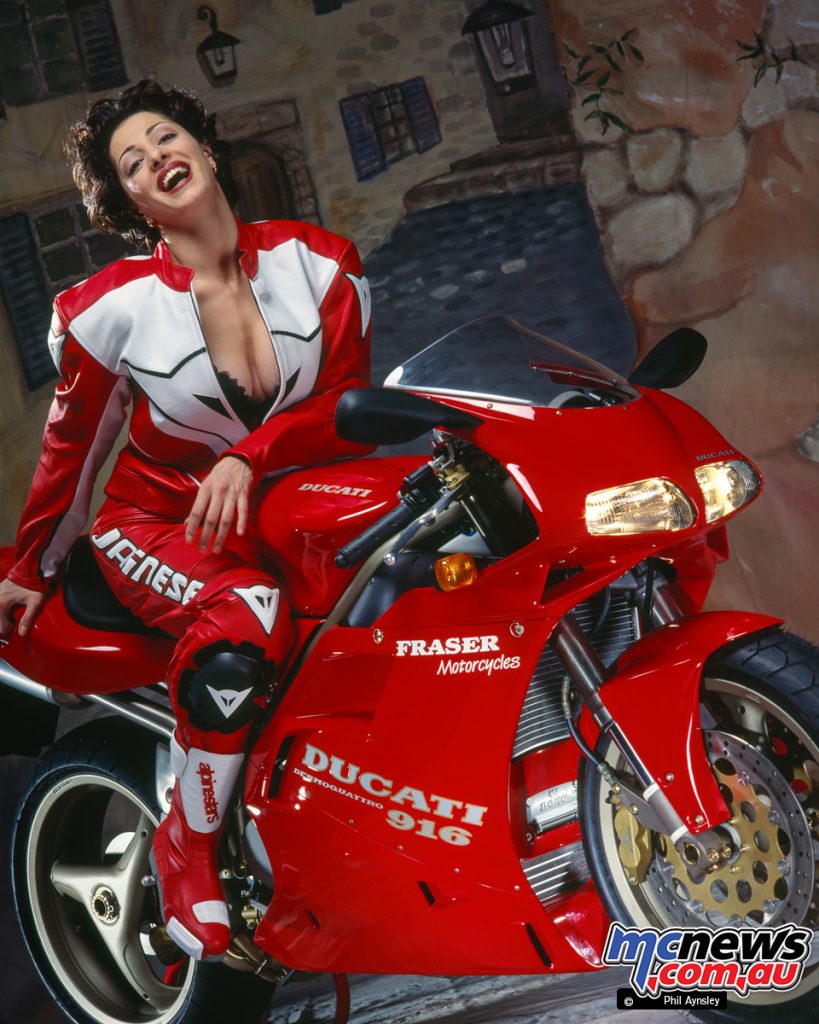
What the 916 for Ducati was take the company beyond that of an enthusiast niche market manufacturer to that of the creator of a universally admired and desirable motorcycle. Since its release in 1994 the 916 went on to become arguably the greatest Ducati ever. Providing the class-leading standard for close to a decade no other Ducati had such success on the track for such a long period and remained at the top of the performance world for so long.
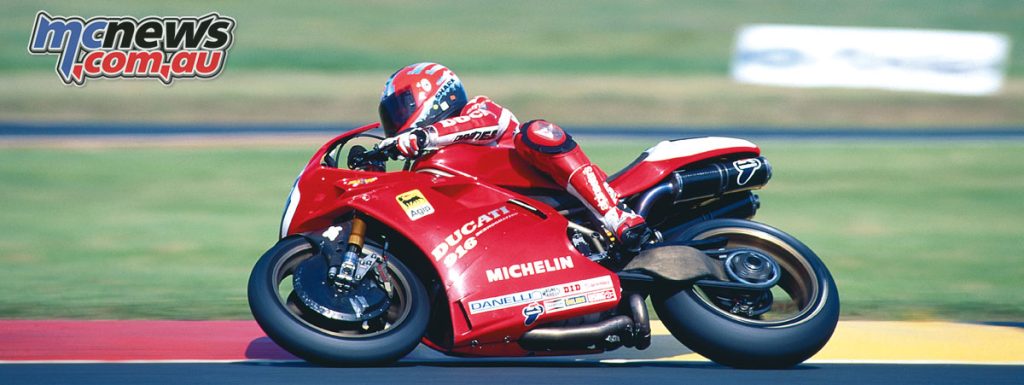
Five Ducati 916 Facts
- Massimo Tamburini moved from Bimota (he was the “ta” in Bimota) to Ducati in 1984 and his first design was the Paso.
- Tamburini embarked on the 916 during 1988. This lasted almost six years and was codenamed the 2887 project. Work on the geometrical aspect of the 916 frame took place over a two year period even before the construction of a prototype.
- The definitive frame configuration was completed in January 1992, an important structural component being the sealed airbox with the lower part of the fuel tank forming the top of the airbox.
- The 916 was immediately successful as a racer, Carl Fogarty winning the 1994 World Superbike Championship. He repeated this in 1995 and Troy Corser won in 1996. Fogarty went on to win the World Superbike Championship in 1998 and 1999 on 916-derived Superbikes.
- Between 1994 and 1999 the 916 grew to 955cc and eventually 996cc. The final Desmoquattro 996 was in 2001 before being replaced by the Testastretta 998 in 2002. The 916 also begat a similar 748 in 1995 and a wide variety of special editions.
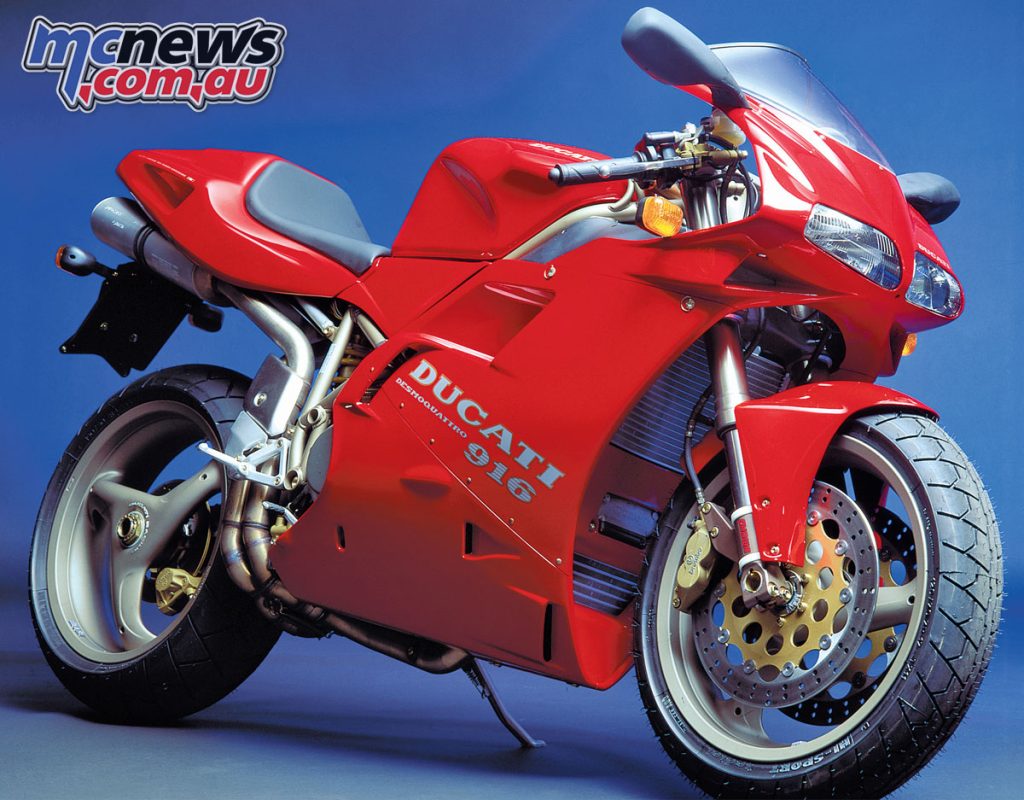
Claudio Domenicali
Ducati CEO on the 916
“What is your favorite historical Ducati bike? This is one of the most frequently asked questions during an interview.
“I have no doubt, my favorite historical bike is the 916 because it represented a turning point between the bikes designed by engineers and motorcycles as an extraordinary synthesis of art and technology.
“The 916 model was the masterpiece of Tamburini that showed how it is possible to apply the design to every single component of the bike, from the footpegs to the exhaust, and not only to the painted surfaces or the body.
“Before 916 the exhaust system, for example, was designed by a technician with limited attention to the impact on design in general. In a motorcycle everything is so exposed that the harmony of the technical components is extremely important to convey beauty and emotion in its overall perception.
“Massimo Tamburini, that we call “Maestro”, with the 916 brought a real revolution in the world of Ducati, creating the still valid principles of Ducati DNA. The result of a work that lasted six long years, in which he studied meticulously every single detail, obtaining an incredible result – both technically and stylistically – without the use of the wind tunnel.
“I am personally bonded to 916 also because I had the privilege to work closely with Massimo during my graduation thesis as mechanical engineer: the work was the finite element analysis of the trellis frame and the single sided swinging arm. In this paper is also discussed how Formula 1 cars had more efficient structures using the engine as a stressed element, that many years later gave birth to the monocoque concept of the 1199 and the front frame structure of Panigale and Multistrada V4.
“They are historical examples like this that still allow us to design and produce the most beautiful bikes in the world: a concentration of style, sophistication and performance symbol of Made in Italy.”
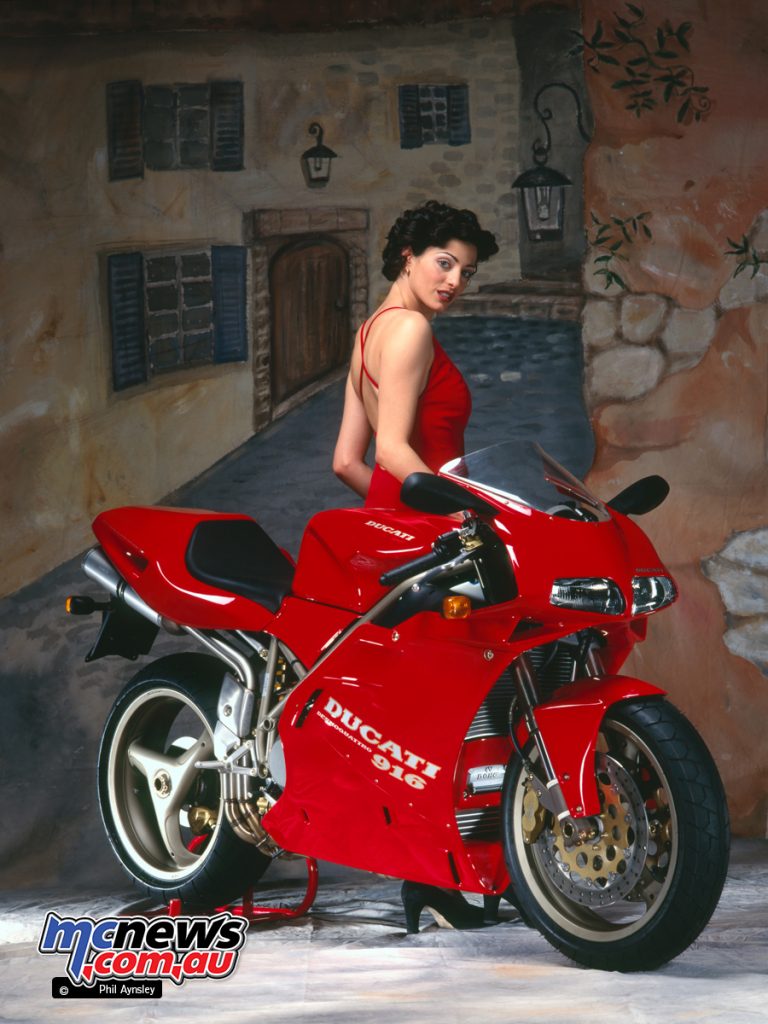
Ducati 916 Specifications
| Engine | |
| Engine (type) | 916 cc Liquid-cooled, 4-stroke Twin-cylinder, 90° L-type |
| Bore & Stroke | 94,0 x 66,0 mm |
| Compression ratio | 11.0:1 |
| Valve train | Belt driven desmodromic, DOHC, 4 valves per cylinder |
| Power | 114 hp (85 kW) / 9000 rpm |
| TOrque | 99,0 Nm (10,1 kg*m) / 7000 rpm |
| Top speed | 260 km/h |
| Drivetrain | |
| Clutch | Dry, multi-plate, hydraulic operated |
| Transmission | 6-speed |
| Final drive | Chain |
| Gear Ratios | |
| I | 2.467 |
| II | 1.765 |
| III | 1.35 |
| IV | 1.09 |
| V | 0.958 |
| VI | 0.857 |
| Chassis | |
| Frame (type) | Tubular type with chrome-molybdenum steel trestle |
| Front suspension, travel | 43 mm inverted telescopic fork Showa (fully adjustable), 127 mm |
| Rear suspension, travel | Swingarm with mono-shock Showa (fully adjustable), 130 mm |
| Front tire size | 120/70-ZR17 |
| Rear tire size | 180/55-ZR17 or 190/50-ZR17 |
| Front brake | Double disc, 320 mm, 4-piston calipers |
| Rear brake | Single disc, 220 mm, 2-piston caliper |
| Fuel capacity | 17 Litres |
| Electrical | |
| Ignition system | Electronic type |
| Alternator | 12V-350W |
| Battery | 12V-16Ah |
| Weights / Dimensions | |
| Dimensions | L 2050 mm / W 780 mm / H 1090 mm |
| Seat height | 790 mm |
| Wheelbase | 1410 mm |
| Ground clearance | 150 mm |
| Weight | 198 kg Strada / 204 kg Biposto |
